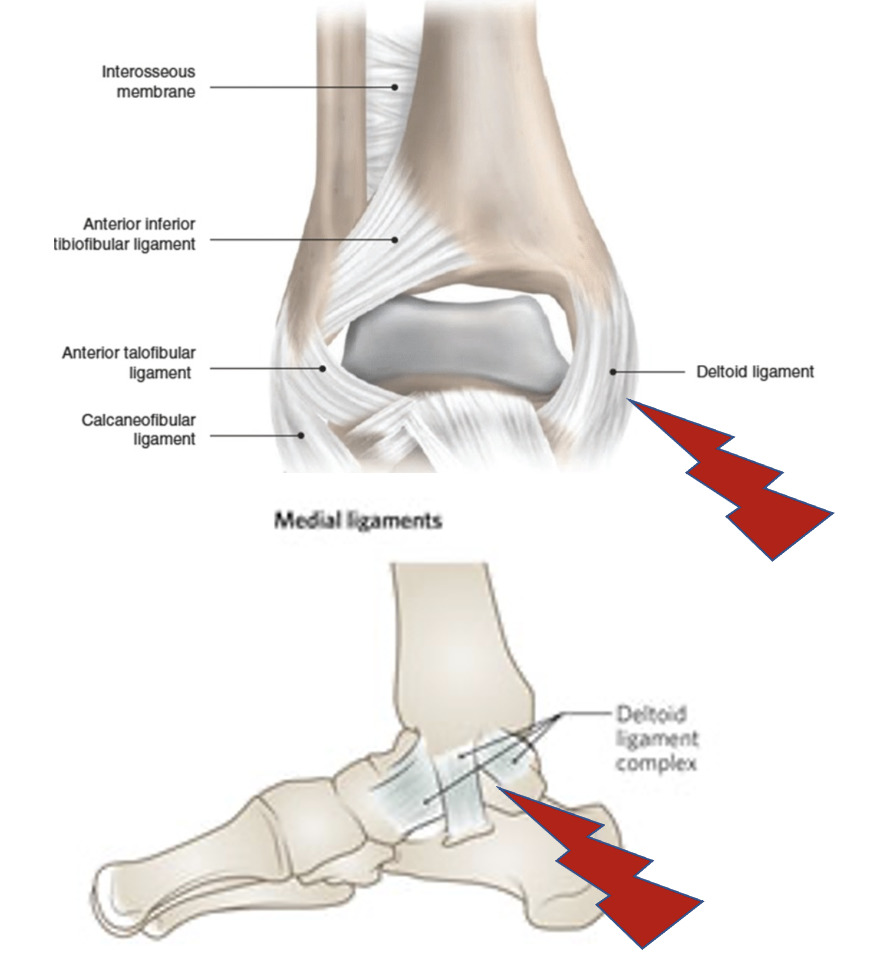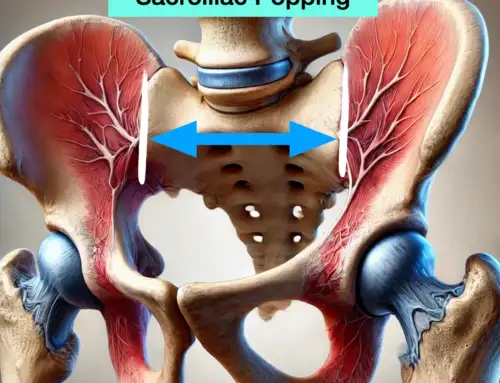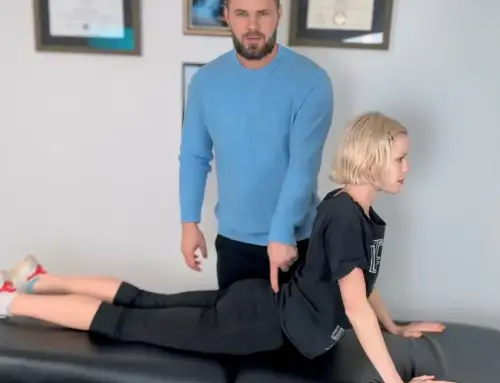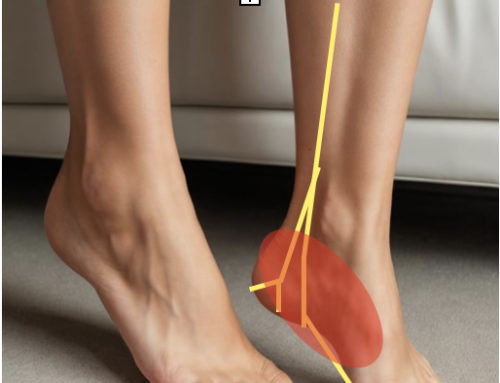Deltoid Ligament: Ankle Ligament Injuries, Anatomy of A Deltoid Ligament Sprain
The Deltoid Ligament or medial ankle ligament is part of the medial ankle complex. This uncommon ligamentous ankle sprain of eversion occurs when eversion forces and external rotation occur at the foot or ankle. Deltoid ligament injuries include deltoid ligament sprain, deltoid avulsion, and instability. Deltoid and ligamentous sprains can alter proprioception. Repeated medial ankle sprains can lead to deltoid instability.

Medial ankle injuries to the deltoid ligament need a proper rehabilitation program to ensure that deltoid instability doesn’t occur.
The deltoid ligament, when injured, usually is associated with other foot and ankle injuries such as high ankle sprains, deltoid avulsion fracture, and ankle instability. Structures of the medial ankle complex can become injures, such as the tibialis posterior, flexor hallucis longus, and the saphenous nerve.
Symptoms
Deltoid ligament injuries occur when the ankle is forced or strained into external rotation. When tears occur is can create abnormalities of the deltoid ligament fibers resulting in pain and limited ankle motion.
- Pain inner ankle just below the tibial tuberosity
- Pressing on the deltoid ligament at the “medial gutter of the ankle.”
Anatomy
The deltoid ligament connects the bones on the foot and ankle, known as the medial ankle complex. The deltoid ligament is superficial and deep and spread out like a fan from the navicular bone, calcaneus, and attached to the inner tibia bone.
This foot and ankle ligamentous network stabilizes the ankle joint, protects ankle musculature, and prevents acute ankle injuries.
Types of Injuries
Deltoid ligament injuries subclassifications include acute ankle injury or long-standing chronic abnormalities of the deltoid.
Acute injuries
- Grade 1-4 grade tears of the deltoid ligament
- Deltoid avulsion fractures
- Ankle musculature tear
Chronic Injuries
- Abnormalities of the deltoid ligament sensory feedback to the brain increase the risk of future ankle sprains.
- Deltoid instability or medial ankle instability
- Foot and ankle pain
- Ankle musculature tendinopathy
- Tibial and saphenous nerves develop entrapment due to scar tissue
Treatment
In acute deltoid ligament ankle sprains, the treatment depends on the severity of the tear and bony structure. In complete ruptures and deltoid avulsion fractures, surgery is required.
Chronic deltoid ligament injuries require a more comprehensive rehabilitative approach.
Treatment includes manual techniques to release fascial abnormalities of the deltoid. These abnormalities create altered force mechanics of the region and alter sensory feedback to the brain.
- Fascial manipulation of medial ankle including deltoid ligament and flexor retinaculum
- Proprioceptive exercises for foot and ankle
- Tibial nerve and saphenous nerve mobilizations
- Strengthening exercises of the foot and ankle, including tibias posterior and peroneal longus.
Our editorial practices include evidence-based practices, interventions, and recommendations
Home Remedies For Immediate Sciatica Relief: 2025 Update
Sciatica Remedies at Home for Immediate Relief Immediate [...]
Medications For Immediate Sciatica Relief
Comprehensive Guide to Sciatica Pain Relief Medications This [...]
Obturator Internus Stretch: Stretch Your Muscles with These Exercises for the Obturator Internus
Unlocking Pelvic Mobility: The Power of Obturator Internus Stretch [...]
Stretches For Adductor Magnus: Improve Flexibility with Adductor Magnus Stretches!
How to Stretch Your Adductor Magnus The adductor [...]
Iliotibial Band Stretch Exercises: Improve Your Flexibility with the Best IT Band Stretch Exercises!
Iliotibial Band: Exercises and Stretches for Hip and Knee [...]
Gracilis Stretch: Stretch Your Muscles and Relieve Pain with Gracilis Stretches!
How to Stretch the Gracilis Muscle The gracilis [...]
GET IN TOUCH WITH DR. DEAN
YOU should be able to move the way you’d like to move without experiencing pain. YOU should be able to experience freedom and energy knowing there’s nothing holding back from giving your life 110%. Dr. Dean would like to learn more about your challenges with a quick phone or email before beginning treatment. Contact him today.











